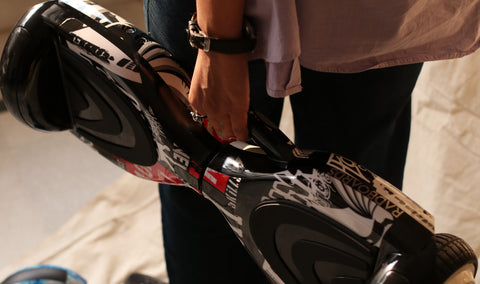
The Future of Hoverboards: What to Expect in the Coming Years
Hoverboards are self-balancing electric scooters that gained popularity in the early 2010s. They are sometimes also called self-balancing scooters or smart balance wheels. Despite their name, hoverboards do not actually hover, instead, they have two wheels that roll along the ground.
Hoverboards have become increasingly popular since their invention in 2013, with many people using them for personal transportation and entertainment. In the coming years, we can expect to see several advancements in hoverboard technology that will make them more efficient, safer, and accessible to a broader range of people.
Hoverboards are controlled by the rider's balance and movements. They use gyroscopic sensors to detect the rider's movements and adjust the speed and direction accordingly. They are powered by rechargeable batteries and can travel at speeds of up to 10-15 miles per hour, depending on the model.
Hoverboards became a cultural phenomenon in 2015 when celebrities began posting videos of themselves riding them on social media. However, safety concerns were soon raised due to reports of fires and explosions caused by faulty batteries. As a result, many countries introduced regulations and safety standards for hoverboards, and some airlines banned them from being carried on board. Despite these setbacks, hoverboards remain a popular mode of transportation and recreation for many people around the world.
Expect in the Coming Years-
Improved battery life: One of the most significant limitations of current hoverboards is their battery life, which typically lasts for only a few hours of use. However, with advancements in battery technology, we can expect to see longer-lasting and more efficient batteries in the future. This will allow hoverboard users to travel greater distances without needing to recharge their devices.
Better safety features: Safety has always been a concern with hoverboards, as they have been known to catch fire or explode due to battery issues. However, manufacturers have made significant improvements in safety features over the years, and we can expect to see even better safety measures in the future. These may include better fire-resistant materials, automatic shut-off features, and improved battery management systems.
More advanced controls: Current hoverboards are typically controlled through a combination of body movements and handheld remotes. However, future hoverboards may incorporate more advanced control systems, such as voice commands or smartphone apps. This will make it easier and more intuitive for users to control their hoverboards.
Increased accessibility: Currently, hoverboards can be expensive, and their use is limited to those who can afford them. However, as technology advances, we can expect to see more affordable hoverboards that are accessible to a broader range of people. This will make it possible for more people to experience the fun and convenience of using a hoverboard.
Integration with other transportation systems: Hoverboards are currently used as standalone transportation devices, but in the future, we may see them integrated with other transportation systems. For example, a hoverboard may be used to cover the last mile of a commute, such as from a train station to a workplace. This will make them a more convenient and efficient mode of transportation.
Overall, the future of hoverboards looks promising, with advancements in technology that will make them safer, more efficient, and more accessible to a broader range of people. As these advancements continue, we can expect to see even more innovative uses for hoverboards in the years to come.
The idea of a perfect hoverboard may vary from person to person, but in general, a perfect hoverboard would be a device that could levitate above the ground and allow users to move around in a smooth, effortless manner. Here are some features that could make up a perfect hoverboard:
Levitation Technology: The most important feature of a hoverboard is its ability to hover or levitate above the ground. This could be achieved using magnetic levitation, also known as maglev technology, or some other form of anti-gravity technology.
Stability: A perfect hoverboard should be stable and not wobble or tip over easily. It should have an advanced stabilization system that keeps the board level and ensures a smooth ride.
Maneuverability: The hoverboard should be easy to control and maneuver, allowing users to move around in any direction with ease.
Safety Features: A perfect hoverboard should have built-in safety features to protect the rider from harm. This could include features like automatic speed adjustment, collision avoidance technology, and emergency braking.
Safety Features: A perfect hoverboard should have built-in safety features to protect the rider from harm. This could include features like automatic speed adjustment, collision avoidance technology, and emergency braking.
Battery Life: The battery life of the hoverboard should be long enough to allow for extended use, without requiring frequent recharging.
Durability: The hoverboard should be built to last, with high-quality materials that can withstand wear and tear.
User-Friendly: A perfect hoverboard should be easy to use and maintain. It should have simple controls and be intuitive to operate, even for beginners.
Overall, a perfect hoverboard would be a safe, reliable, and fun way to travel. While the technology for a perfect hoverboard may not yet exist, ongoing research and development could one day make it a reality.
